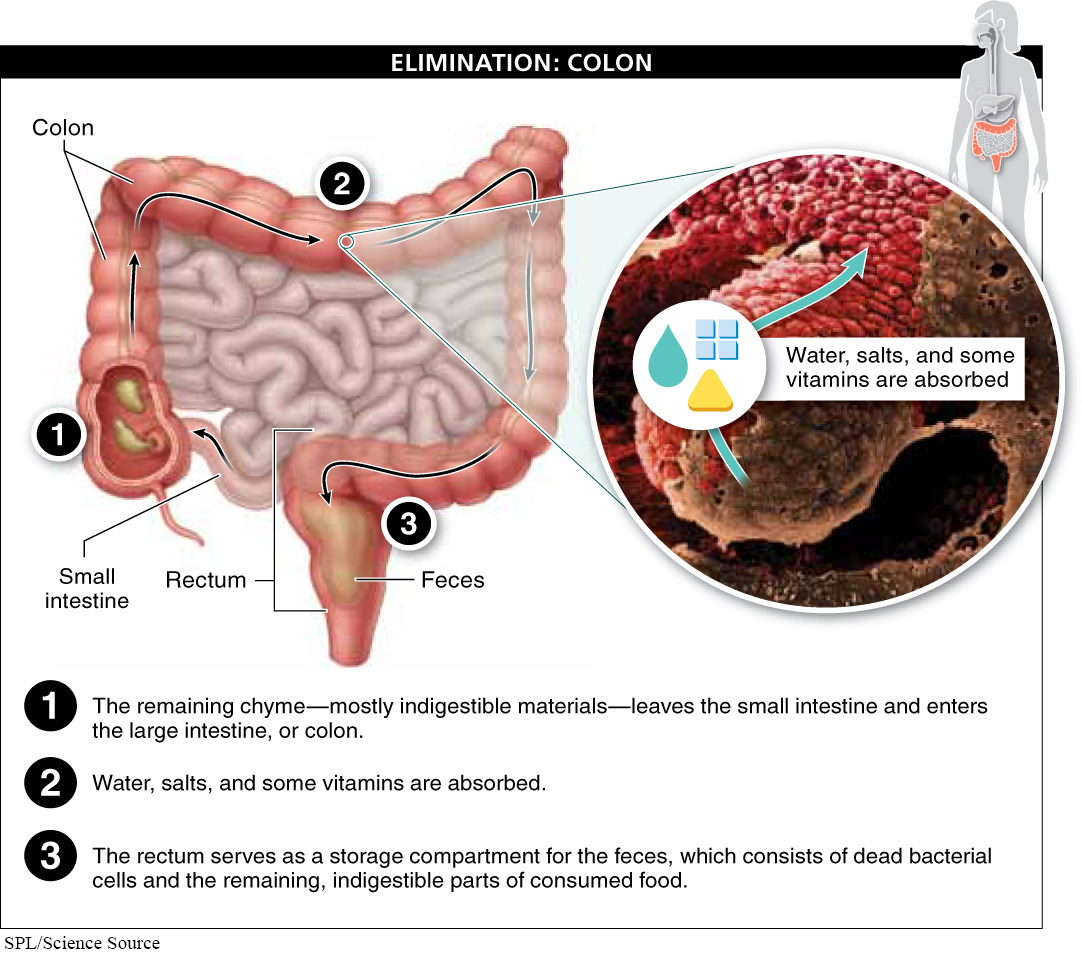You are much better at conservation and recycling than you imagine. Especially when it comes to the fluids and solids you consume. The last phase in the breakdown of food, elimination, takes place as what’s left of the chyme—
Fiber is an indigestible carbohydrate. If we can’t digest it, how can it be essential in our diet?
In the bite of hamburger described earlier, some of the material, including molecules in the lettuce, cannot be digested or absorbed. This material is called fiber and includes gums and cellulose. For this reason, when fiber is consumed, it increases fecal mass. With additional mass, more water is attracted, speeding the movement of chyme through the colon, softening the feces and making it easier to eliminate (that’s why too much fiber can lead to diarrhea). Fiber also binds to bile, causing some of it to be eliminated and thereby reducing the body’s ability to absorb cholesterol from food. It is important to achieve just the right balance of water absorption in the large intestine. If too much is absorbed, the remaining indigestible material becomes too solid and can’t move easily through the last part of the digestive system, causing constipation.

895
Alternatively, if too little water absorption occurs, the body loses more water through diarrhea.
Huge colonies of bacteria live in the colon. Before we are born, our guts are sterile and free of bacteria. During birth, we acquire some of our mother’s vaginal and fecal bacteria. By the age of two, all of the numerous bacterial species present in adults have been acquired from food and the environment. At any given time, we generally have more bacterial cells than our own body cells (see Figure 13-5). The bacteria are usually harmless and live off the undigested materials that end up in the colon. Bacteria also release important metabolic by-
Why can taking antibiotics lead to vitamin deficiencies?
Antibiotics frequently (and unintentionally) kill a large proportion of the colon bacteria, in addition to whatever illness-
Laxatives contain salts. How can this help them reduce constipation?
In the colon, water is removed from feces through osmosis. First, salts are pumped out of the colon into surrounding cells, and then water moves out by simple diffusion (to an area where there are more ions). This process can be manipulated as a treatment for constipation. Laxatives contain magnesium salts, which are so slowly absorbed that they are still largely intact when they reach the colon. Laxatives work by increasing the salt concentration in the colon, so that more water remains. This additional water makes it easier to excrete feces (but can sometimes cause diarrhea).
TAKE-HOME MESSAGE 22.12
The last phase of food breakdown takes place as the mostly indigestible materials leave the small intestine and enter the large intestine. There, water and ions are absorbed before the remaining materials are defecated.
When a person takes antibiotics to treat a bacterial infection, many intestinal bacteria are unintentionally killed. What adverse affects does this have on the digestive system?
Reduced bacterial populations in the large intestine can lead to more rapid movement of undigested materials through the colon with less time for water removal, resulting in diarrhea. Also, because intestinal bacteria produce vitamin K and biotin, reduced bacterial populations can result in deficiencies in these vitamins.
896